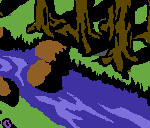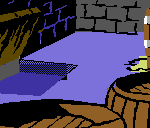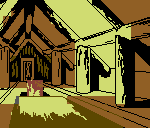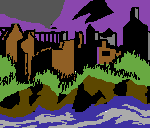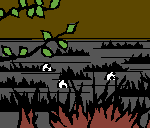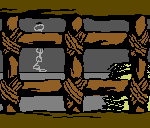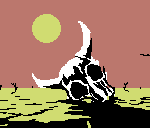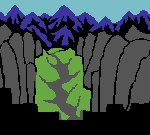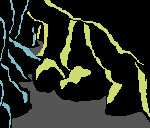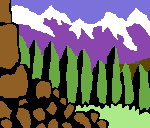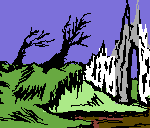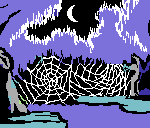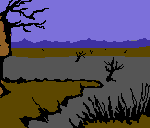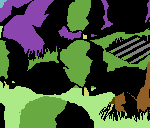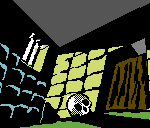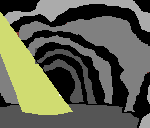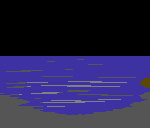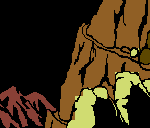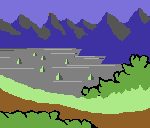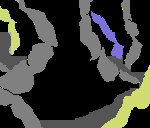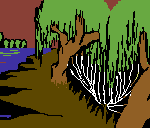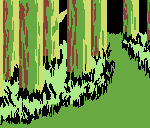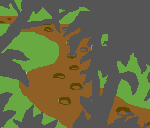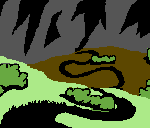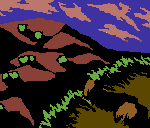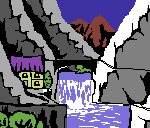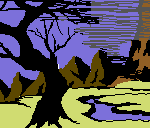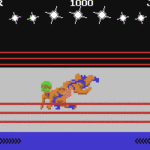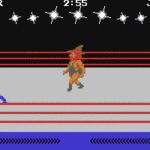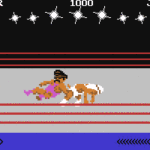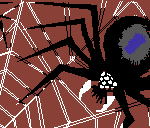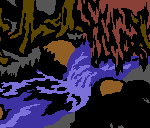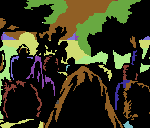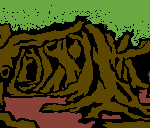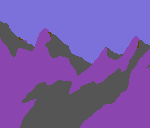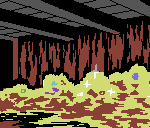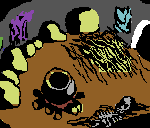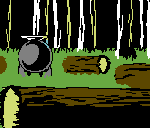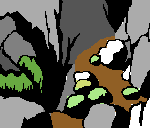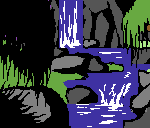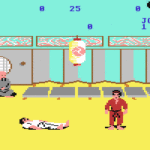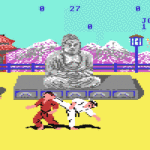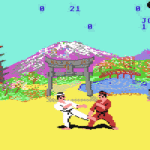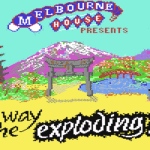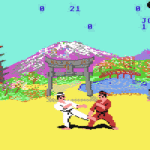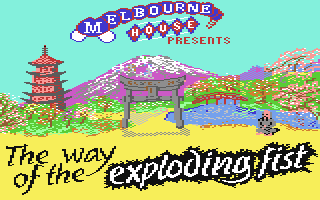
Greg Holland studied art at Bendigo College and went on to study at the Victorian College of Arts in Melbourne. He trained as a traditional artist in printing and painting. Upon graduating, Holland got a job at Beam Software in Melbourne. When he joined Beam Software, the role of game artist was a position and career that previously had not existed. Holland explains that he got his job through his friend, Russel Comte, the first artist that Beam had hired. Whilst Holland had never used computers in his art studies, his skills and art training allowed him to produce great graphics, while working within the confines of the limited palette of the micro-computer. In his talk for talk the students of Bendigo College (see video link below) Holland talks about the processes of making art for the early microcomputer games. He identifies some of the tricks that the artist had to work to deal with the constraints of system. For examples in the Way of the Exploding Fist the he size of the fighters was greater than the 8×8 grid it in fact used two 8×8 grids but only one grid the upper body and arms or the legs were animating at one time.
Some of the games that Holland worked on while he was at Beam include the disk version of The Hobbit, The Way of the Exploding Fist, Rock n Wrestle, Fist II: The Legend Continues, The Castle of Terror and Aussie Games.
Other games developed:
The Hobbit (1985), The Way of the Exploding Fist (1985), Judge Dredd (1985), Fist: The Legend Continues (1986), The Fellowship of the Ring (1986), Rock ‘n Wrestle (1986), Pole Position II (1988), Aussie Games (1989), Castle of Terror (1985).
Company Meta
Images
- Courtesy of Commodore Retro Heaven
- Courtesy of Commodore Retro Heaven
- Courtesy of Commodore Retro Heaven
- Courtesy of Commodore Retro Heaven
- Courtesy of Commodore Retro Heaven
- Courtesy of Commodore Retro Heaven
- Courtesy of Commodore Retro Heaven
- Courtesy of Commodore Retro Heaven
- Courtesy of Commodore Retro Heaven
- Courtesy of Commodore Retro Heaven
- Courtesy of Commodore Retro Heaven
- Courtesy of Commodore Retro Heaven
- Courtesy of Commodore Retro Heaven
- Courtesy of Commodore Retro Heaven
- Courtesy of Commodore Retro Heaven
- Courtesy of Commodore Retro Heaven
- Courtesy of Commodore Retro Heaven
- Courtesy of Commodore Retro Heaven
- Courtesy of Commodore Retro Heaven
- Courtesy of Commodore Retro Heaven
- Courtesy of Commodore Retro Heaven
- Courtesy of Commodore Retro Heaven
- Courtesy of Commodore Retro Heaven
- Courtesy of Commodore Retro Heaven
- Courtesy of Commodore Retro Heaven
- Courtesy of Commodore Retro Heaven
- Courtesy of Commodore Retro Heaven
- Courtesy of Commodore Retro Heaven
- Courtesy of Commodore Retro Heaven
- Courtesy of Commodore Retro Heaven
- Courtesy of Commodore Retro Heaven
- Courtesy of Commodore Retro Heaven
- Courtesy of Lemon64.com
- Courtesy of Lemon64.com
- Courtesy of Lemon64.com
- Courtesy of Lemon64.com
- Courtesy of Lemon64.com
- Courtesy of Lemon64.com
- Courtesy of Lemon64.com
- Courtesy of Lemon64.com
- Courtesy of Lemon64.com
- Courtesy of Lemon64.com
- Courtesy of Lemon64.com

